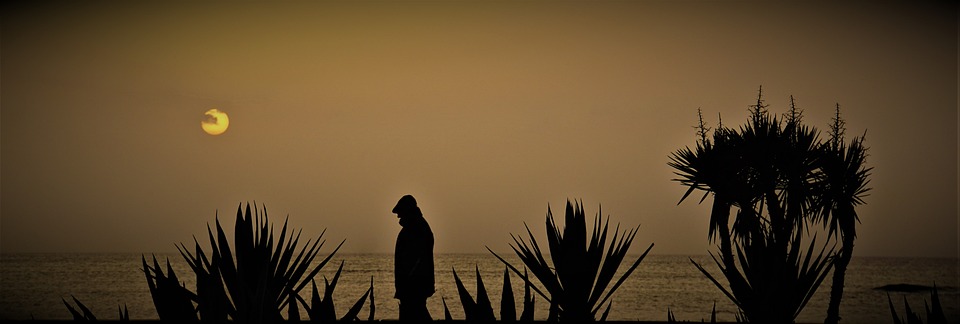Introduction
Benicarló, a coastal town located in the province of Castellón, Spain, has undergone a remarkable transformation over the years. What was once a humble fishing village, primarily known for its maritime activities, has now become a thriving tourist destination. This article delves into the rich history and evolution of Benicarló, from its early days as a small fishing community to its current status as a popular tourist haven.
Ancient Origins
The roots of Benicarló can be traced back to ancient times. The area was inhabited by various civilizations, including the Iberians and the Romans. The Romans, in particular, recognized the strategic value of the location, owing to its proximity to the Mediterranean Sea. They established a settlement called Decumanus, which served as a vital port for maritime trade.
Fishing Village Era
As the centuries passed, Benicarló evolved into a quaint fishing village. The local residents relied heavily on fishing as their primary source of income. The town’s economy revolved around the sea, and the fishing industry played a critical role in shaping its culture and traditions.
During this period, Benicarló was known for its bustling fishing harbors, where fishermen would set sail to the Mediterranean in search of bountiful catches. The town’s inhabitants had deep-rooted knowledge of the sea and possessed unique fishing techniques that were passed down through generations.
The Rise of Tourism
In the mid-20th century, as international travel became more accessible, Benicarló witnessed a significant shift in its economic focus. The appeal of its stunning coastline and pristine beaches attracted tourists from far and wide. Recognizing the potential for growth, the local authorities invested in the development of tourism infrastructure, including hotels, resorts, and recreational facilities.
The influx of tourists brought with it an array of benefits. The economy boomed, businesses flourished, and new employment opportunities emerged. Benicarló became renowned for its warm hospitality and picturesque landscapes, making it a sought-after destination for both domestic and international travelers.
Preserving Tradition
Despite its rapid transition into a tourism hub, Benicarló has managed to preserve its identity and cultural heritage. The fishing industry, while no longer the primary economic driver, still holds significance in the town. Local fishermen continue to go out to sea, providing the freshest catch for the local markets and restaurants.
Traditional festivals and events, such as the Feast of the Virgin of the Carmen (the patron saint of fishermen), pay homage to the town’s roots and keep the fishing village legacy alive. Visitors can immerse themselves in the vibrant atmosphere of these celebrations, experiencing the authentic charm of Benicarló.
FAQs about Benicarló
1. What is the best time to visit Benicarló?
Benicarló enjoys a Mediterranean climate, with mild winters and hot summers. The peak tourist season is during the summer months of June to August when the warm weather allows for beach activities and outdoor exploration.
2. Are there any notable landmarks in Benicarló?
Absolutely! Benicarló is home to several remarkable landmarks, including the Church of Sant Bartomeu and Santa Maria, the historic Castle of Benicarló, and the Tower of Sant Carles. These attractions offer a glimpse into the town’s rich history and architectural heritage.
3. Can you recommend any local delicacies to try?
Certainly! Benicarló is renowned for its seafood cuisine. Don’t miss the opportunity to savor dishes such as “arroz a banda” (rice cooked in fish broth), “suquet de peix” (fish stew), and “fideuà” (similar to paella, but made with noodles instead of rice). These mouthwatering delicacies showcase the town’s strong connection to its fishing traditions.
4. Are there any cultural events worth attending in Benicarló?
Absolutely! Benicarló hosts numerous cultural events throughout the year. The popular “Fiesta de la Alcachofa” (Artichoke Festival) celebrates the town’s agricultural traditions, while the “Fiesta de San Bartolomé” showcases vibrant parades, live music, and traditional dances. These events offer a unique insight into the local culture and community spirit.
5. How can I reach Benicarló?
Benicarló is well-connected by road and rail. The nearest airport is Castellón-Costa Azahar Airport, which offers domestic and international flights. From there, you can easily reach Benicarló by taxi, rental car, or public transportation.
In conclusion, Benicarló’s journey from a small fishing village to a thriving tourist haven is a testament to the town’s adaptability and resilience. While embracing the opportunities presented by tourism, Benicarló has managed to preserve its cultural heritage and maintain its connection to the sea. Today, it stands as a vibrant destination where history, tradition, and modernity coexist harmoniously, inviting visitors to explore its rich past and indulge in its natural beauty.

